Growing Florence Fennel in July UK: Complete Guide for Success
Discover how to successfully grow Florence fennel from July sowings in the UK. This comprehensive guide covers everything from choosing bolt-resistant varieties to harvesting sweet, aniseed-flavoured bulbs perfect for British gardens.
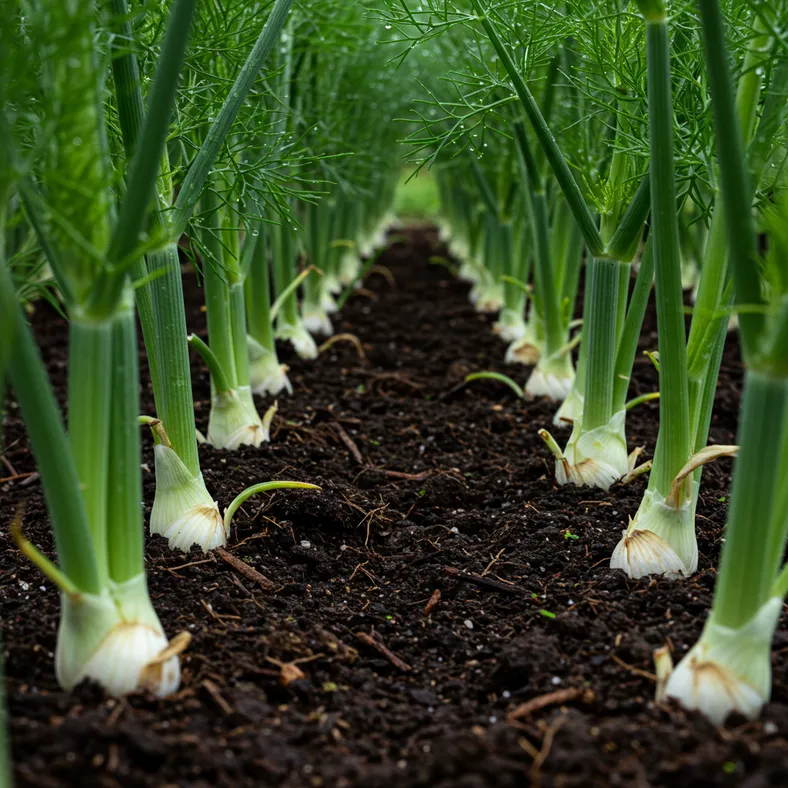
- Why July is Perfect for Florence Fennel in the UK
- Choosing the Right Florence Fennel Variety for July Sowing
- Preparing Your Plot for July Sowing
- Direct Sowing Florence Fennel in July
- Container Growing for July Sowings
- Essential Care Through Summer and Autumn
- Harvesting Your July-Sown Florence Fennel
- Common Problems and Solutions
July is the perfect time to sow Florence fennel in the UK, offering gardeners the ideal window for growing this delicious Mediterranean vegetable successfully in British conditions. Unlike many crops that prefer spring sowing, Florence fennel thrives when planted during the warmer months, making July sowings particularly rewarding for UK gardeners.
Florence fennel, with its distinctive aniseed flavour and crisp white 'bulb', has become increasingly popular in British gardens. While it can be challenging to grow due to its tendency to bolt (go to seed prematurely), July plantings often prove more successful as they benefit from warm soil and longer daylight hours whilst avoiding the temperature fluctuations that trigger early flowering.
Why July is Perfect for Florence Fennel in the UK

July represents the sweet spot for Florence fennel cultivation in British gardens. The soil has warmed sufficiently from the summer heat, reducing the risk of bolting that plagues earlier sowings. Temperature stability is crucial for this Mediterranean crop, as cold spells and temperature fluctuations are primary triggers for premature flowering.
During July, UK soil temperatures typically reach 15-20°C, which is ideal for Florence fennel germination and establishment. The consistent warmth helps young plants develop strong root systems before autumn arrives, whilst the longer daylight hours promote healthy foliage growth.
July sowings also allow you to follow early crops like new potatoes or broad beans, making efficient use of garden space. Many UK gardeners find July-sown Florence fennel more reliable than spring sowings, with better bulb formation and reduced bolting rates.
The timing also means your harvest will coincide with autumn, when the cooler weather actually improves the flavour and texture of the bulbs, making them sweeter and more tender.
Choosing the Right Florence Fennel Variety for July Sowing
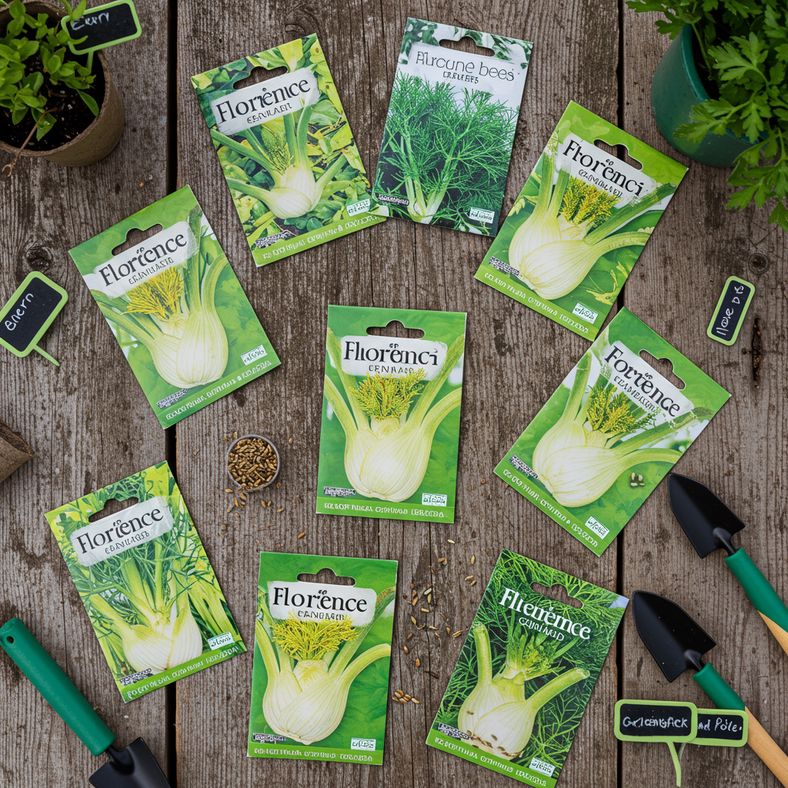
Selecting bolt-resistant varieties is essential for July sowings in the UK. These specially bred cultivars can withstand temperature fluctuations and stress better than traditional varieties, significantly improving your chances of a successful harvest.
Top Bolt-Resistant Varieties for UK Gardens:
- 'Dragon': Compact plants with excellent bolting resistance and resistance to yellowing. This RHS Award of Garden Merit winner is particularly suited to British conditions.
- 'Rondo': Quick-growing variety producing uniform bulbs. Excellent for both outdoor and protected growing, with good cold tolerance.
- 'Zefa Fino': Forms medium to large, slightly flattened bulbs. Another RHS AGM winner with reliable performance in UK gardens.
When sourcing seeds, ensure you're purchasing Florence fennel (Foeniculum vulgare var. azoricum) rather than herb fennel. Florence fennel seeds are specifically bred for bulb production and perform much better for this purpose.
Disclaimer: This article contains Amazon affiliate links. We may earn a small commission from qualifying purchases at no additional cost to you.
Look for suppliers offering fresh seed with good germination rates, as fennel seeds can lose viability relatively quickly. Many UK garden centres stock these varieties, or you can order from specialist seed suppliers who often provide detailed growing instructions specific to British conditions.
Preparing Your Plot for July Sowing
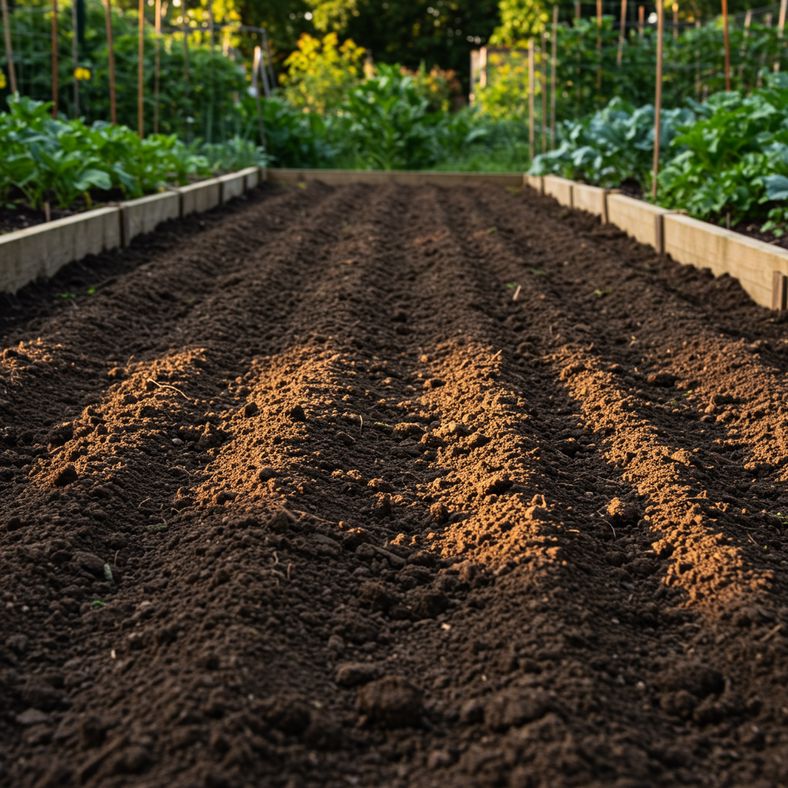
Successful Florence fennel cultivation begins with proper soil preparation. This crop thrives in fertile, free-draining soil that retains moisture without becoming waterlogged—a balance that's particularly important in the UK's variable climate.
Soil Requirements:
- pH between 6.0-7.0 (slightly acidic to neutral)
- Well-drained but moisture-retentive
- Rich in organic matter
- Warm and sheltered position
If you're following early potatoes or other spring crops, the soil will likely already be in good condition. However, adding a 5cm layer of well-rotted compost or manure will boost fertility and improve moisture retention—crucial for preventing bolting.
For heavy clay soils common in many UK regions, consider creating raised beds or adding sharp sand and compost to improve drainage. Florence fennel particularly struggles in waterlogged conditions, which can lead to root rot and poor bulb development.
Choose a warm, south-facing position that receives at least 6 hours of direct sunlight daily. In cooler northern regions of the UK, consider using cloches or fleece to create a warmer microclimate, especially during the establishment phase.
If space is limited or soil conditions aren't ideal, Florence fennel grows excellently in containers. Use pots at least 30cm deep and wide, filled with quality multipurpose compost mixed with extra perlite for drainage.
Direct Sowing Florence Fennel in July
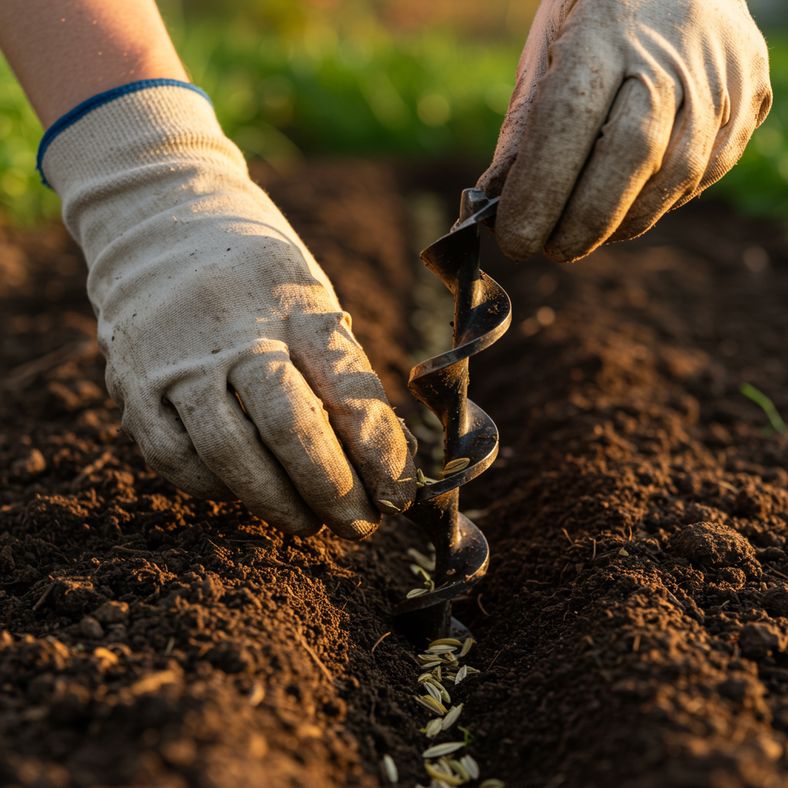
Direct sowing in July offers several advantages over transplanting, as Florence fennel dislikes root disturbance. The warm July soil provides ideal germination conditions, typically achieving emergence within 7-14 days.
Step-by-Step Sowing Guide:
- Timing: Sow from early to mid-July when soil temperature is consistently above 15°C
- Prepare drills: Create shallow furrows 15mm (½ inch) deep using a hoe or cane
- Spacing: Space rows 30cm apart for full-size bulbs, or 20cm for mini vegetables
- Water first: Water along the drill base before sowing to ensure good seed-to-soil contact
- Sow thinly: Place seeds 2-3cm apart along the row—fennel seeds are relatively large and easy to handle
- Cover lightly: Draw soil gently over seeds and firm lightly with the back of a rake
Mark your rows clearly and keep the soil consistently moist but not waterlogged. In hot July weather, consider shading newly sown areas with horticultural fleece during the hottest part of the day until germination occurs.
Thinning Seedlings:
Once seedlings reach 5-7cm tall (usually 3-4 weeks after sowing), thin them to final spacings of 25-30cm apart for full-size bulbs. Be gentle during thinning to avoid disturbing remaining plants' roots. The thinned seedlings make excellent additions to salads with their mild aniseed flavour.
For continuous harvests, consider making succession sowings every 2-3 weeks through July and early August, ensuring a steady supply of fresh bulbs through autumn and early winter.
Container Growing for July Sowings
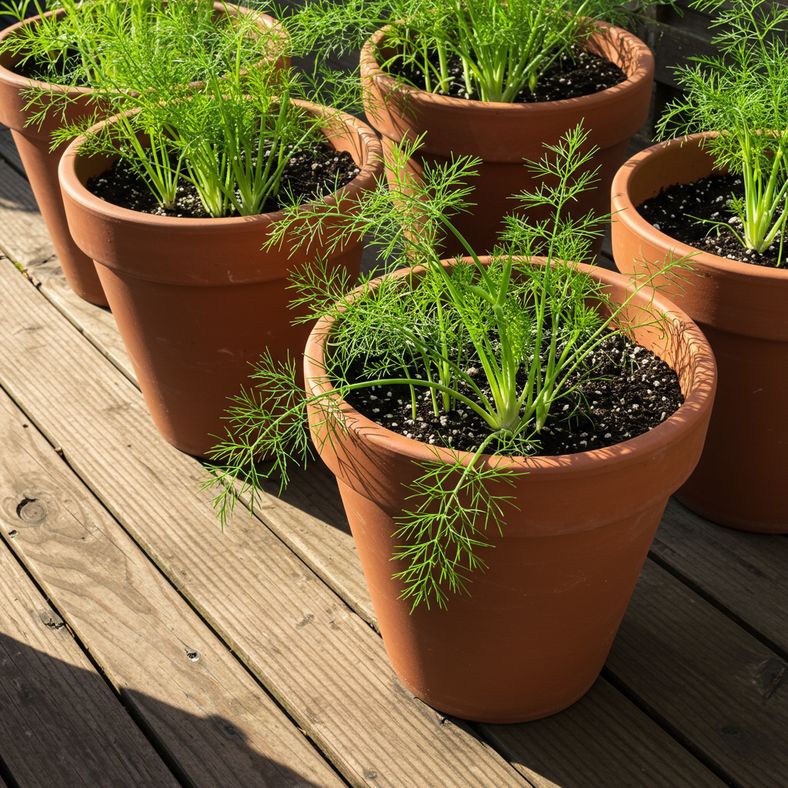
Container growing offers excellent control over growing conditions and is particularly beneficial for gardeners with heavy clay soils or limited space. July sowings in containers often outperform ground-grown plants as you can maintain consistent moisture levels more easily.
Container Requirements:
- Minimum 30cm deep and 40cm wide for 2-3 plants
- Excellent drainage holes
- Quality multipurpose compost mixed with perlite or vermiculite
- Positioned in full sun but with afternoon shade protection during hot spells
For container growing, sow 2-3 seeds per pot and thin to the strongest seedling once established. Alternatively, sow multiple seeds for harvesting as baby vegetables at 10-15cm spacing.
Container Care Tips:
- Check moisture levels daily—containers dry out much faster than ground soil
- Use saucers during hot weather but remove them if conditions become wet
- Feed weekly with diluted liquid fertiliser once plants are established
- Consider moving containers to protected spots during extreme weather
Large containers also allow you to extend the growing season by moving plants into greenhouse or polytunnel conditions as autumn progresses, potentially harvesting fresh fennel well into winter.
Essential Care Through Summer and Autumn

Consistent care through the growing season is crucial for preventing bolting and ensuring good bulb development. July-sown fennel will be actively growing through August and September, requiring regular attention to watering and feeding.
Watering Strategy:
Maintain consistently moist soil throughout the growing period. Florence fennel is particularly sensitive to drought stress, which triggers bolting within days. During typical UK summer weather, this means watering 2-3 times per week, more frequently during hot spells.
Water deeply rather than little and often, encouraging deep root development. Apply water at soil level rather than overhead to reduce disease risk and water waste. Early morning watering is ideal, allowing plants to take up moisture before the day's heat.
Mulching for Moisture Retention:
Apply a 5cm layer of organic mulch around plants once they're 10cm tall. Grass clippings, straw, or compost work well, helping retain soil moisture and suppress weeds. Keep mulch 5cm away from plant stems to prevent pest harbourage.
Feeding Requirements:
Florence fennel benefits from moderate feeding. Apply a balanced liquid fertiliser every 2-3 weeks, or use a slow-release granular fertiliser at planting time. Avoid high-nitrogen feeds which can promote leaf growth at the expense of bulb development.
Earthing Up for Better Bulbs:
Once stem bases begin to swell (usually 8-10 weeks after sowing), gradually earth up soil around the developing bulbs. This blanching process creates whiter, sweeter bulbs and provides stability as plants grow larger.
Harvesting Your July-Sown Florence Fennel
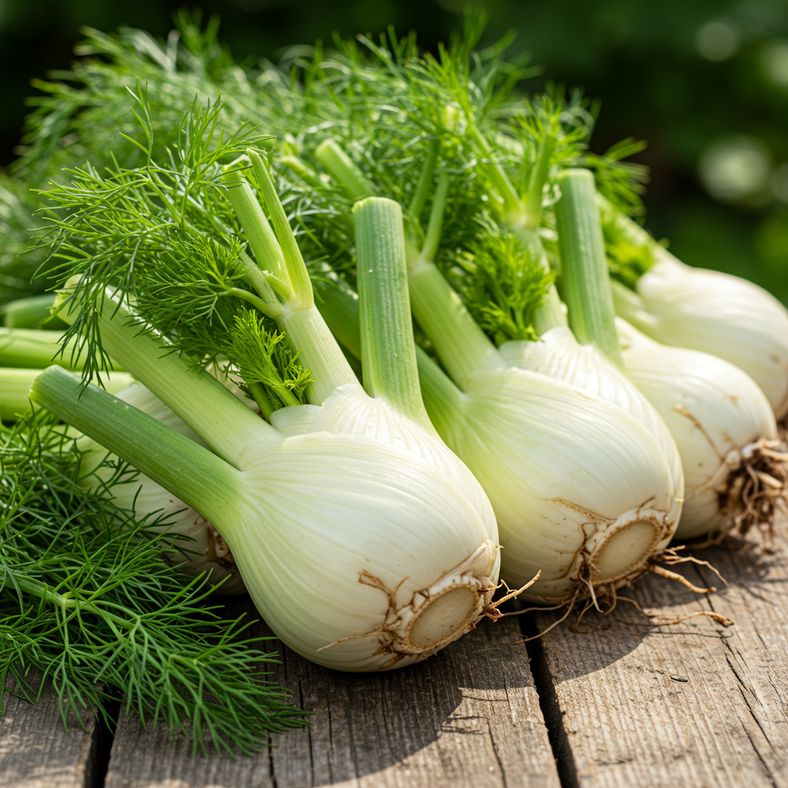
July sowings typically reach harvest maturity from late September through November, providing fresh fennel when many other vegetables are finishing. The cooler autumn weather actually improves flavour development, making July-grown fennel often superior to spring crops.
Signs of Readiness:
- Bulbs measure 8-15cm across (depending on variety)
- Base feels firm and well-developed
- No signs of flower stem development
- Outer layers are white and crisp
Harvesting Technique:
Cut bulbs at ground level using a sharp knife, or lift the entire plant including roots. Harvest in dry conditions when possible, and process immediately for best quality. If you leave the root system in the ground, it often produces small leafy shoots that can be harvested for salads throughout winter.
Extending the Harvest:
Florence fennel can withstand light frosts, so don't rush to harvest everything at once. In milder UK regions, bulbs can remain in the ground well into December if protected with fleece during severe cold spells.
For storage, fennel bulbs keep for 2-3 weeks in the refrigerator, or can be blanched and frozen for longer-term preservation. The feathery foliage also makes an excellent herb for flavouring dishes throughout the season.
Common Problems and Solutions

While July sowings generally face fewer problems than spring plantings, understanding potential issues helps ensure success with your Florence fennel crop.
Bolting Prevention:
Even with July sowings, bolting can occur if plants experience stress. Signs include rapid stem elongation and flower bud formation. Prevention strategies include:
- Consistent watering—never allow soil to dry completely
- Mulching to maintain soil temperature stability
- Avoiding root disturbance during weeding or cultivation
- Using row covers during unexpected cold snaps
Pest Management:
Slugs and snails pose the biggest threat to young fennel plants, particularly during damp autumn weather. Create barriers using copper tape, wool pellets, or organic slug deterrents. Quality secateurs are useful for removing damaged foliage and maintaining plant health.
Disease Prevention:
Good air circulation and avoiding overhead watering help prevent fungal diseases. Remove any yellowing or damaged leaves promptly, and ensure adequate spacing between plants.
Poor Bulb Development:
If bulbs fail to swell properly, check:
- Soil fertility—poor nutrition limits bulb formation
- Water consistency—irregular watering causes uneven growth
- Day length—extremely late sowings may not have sufficient growing time
- Variety choice—ensure you're growing Florence fennel, not herb fennel
Recovery is possible if caught early by improving care conditions and ensuring consistent moisture levels.